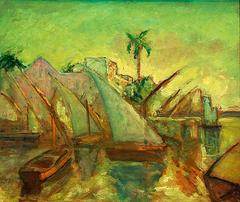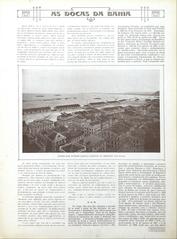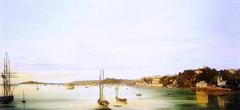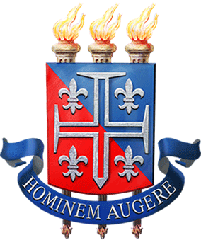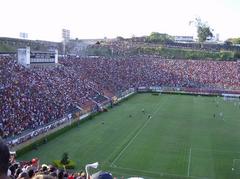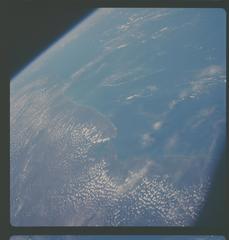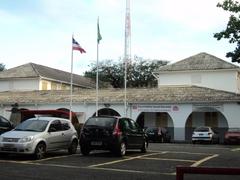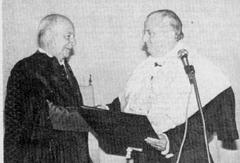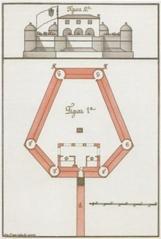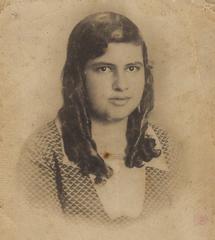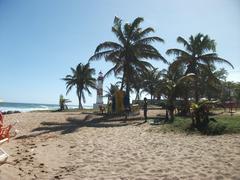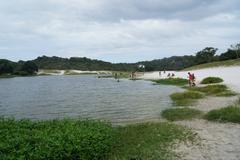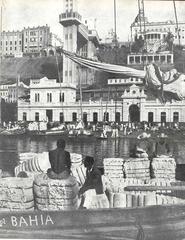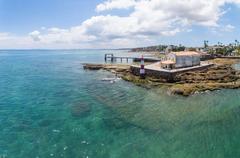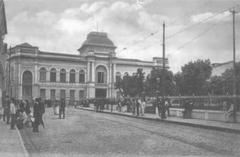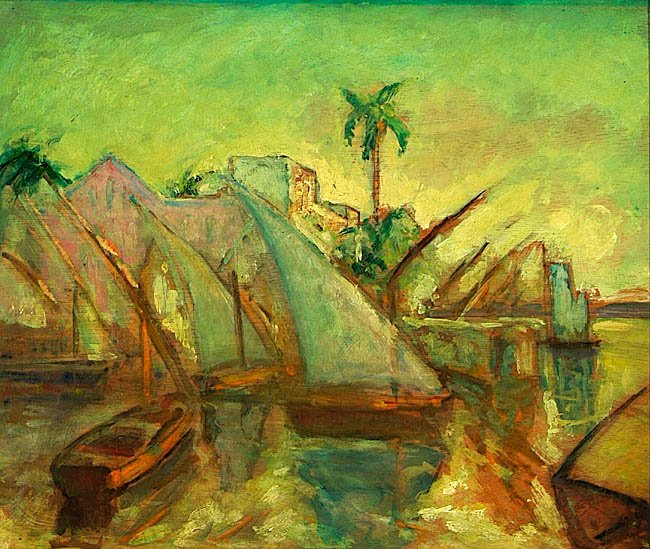
Port of Salvador Visiting Hours, Tickets, and Attractions Guide
Date: 15/06/2025
Introduction
The Port of Salvador, perched on the beautiful Bay of All Saints (Baía de Todos os Santos), is not only a cornerstone of Brazil’s maritime economy but also a living witness to centuries of cultural exchange and historical transformation. From its establishment in the 16th century as Brazil’s first colonial capital, Salvador’s port has played a pivotal role in global trade, the fusion of cultures, and the ongoing growth of one of Brazil’s most vibrant cities. Today, the port welcomes travelers eager to experience its architectural heritage, Afro-Brazilian culture, and dynamic urban life (Britannica; UNESCO; PortGuide).
This comprehensive guide provides everything you need to know for a rewarding visit: from practical details like visiting hours, ticketing, and accessibility, to insights on the port’s historical significance, nearby attractions, guided tours, and essential travel tips. Whether you’re arriving by cruise ship or planning a day trip, you’ll find the information you need to make the most of your time in Salvador (Bahia Pilots; cruiseports.co).
Historical Overview
Early Origins and Colonial Foundations
The Port of Salvador is among the oldest ports in the Americas, dating back to the early 1500s when Portuguese explorers recognized the bay’s potential as a maritime hub. Officially founded in 1549 by Tomé de Sousa, Salvador became the first capital of colonial Brazil and the administrative heart of the Portuguese colony (Britannica; LinkedIn). Shipyards and docks enabled ship repairs and construction, supporting colonial expansion. The city was designed on two levels: the Upper City (Cidade Alta), reserved for government and religious institutions, and the Lower City (Cidade Baixa), where the port, warehouses, and fortifications were located (Darkwing UOregon).
The Golden Age: Sugar, Slavery, and International Trade
Between the 16th and 18th centuries, Salvador’s port flourished as the main Brazilian export hub for sugar, tobacco, redwood, cacao, and leather goods (CitiesABC; LAC Geo). Tragically, it also became a central node in the transatlantic slave trade, shaping the city’s demography and culture (LAC Geo). The port’s prosperity attracted rival colonial powers, leading to its brief capture by the Dutch in 1624 before being recaptured by the Portuguese.
Decline and Transformation
The relocation of the colonial capital to Rio de Janeiro in 1763 marked a gradual shift in economic focus away from Salvador (Britannica). Nonetheless, the port remained a significant commercial center, especially for regional exports. The 19th century saw Salvador become a focal point for the abolitionist movement, leading to the end of slavery in 1888. The city’s population became a unique blend of African, European, and Indigenous heritage (PortGuide).
Modernization and Expansion
The 20th century brought significant modernization. By the early 1900s, new docks, warehouses, and integrated transport links were established (LinkedIn). Industrialization surged with the development of the Aratu Industrial Centre and Camaçari petrochemical complex, and the opening of a deepwater terminal in 1975 enabled the handling of larger vessels and diversified cargo (LAC Geo).
Visitor Information
Visiting Hours
- General Access: The port’s public areas and the adjacent Pelourinho district are typically open daily from 9:00 AM to 6:00 PM. Specific museums and attractions may have different schedules, so check ahead.
- Cruise Terminal: Operates during ship arrivals and departures, commonly from 8:00 AM to 6:00 PM (cruiseports.co).
Tickets and Admission
- Port Area: Most outdoor spaces and the Pelourinho district are free to explore.
- Museums and Historic Sites: Entry fees usually range from BRL 10–20. Tickets for guided tours or special exhibitions can be booked online or on-site.
- Cruise Excursions: Pre-arranged through cruise lines or local operators; check CODEBA or your provider for availability.
Guided Tours and Special Events
- Walking and Boat Tours: Local companies offer themed tours covering history, architecture, and Afro-Brazilian culture.
- Festivals: The port hosts special events, especially during Carnival and Afro-Brazilian celebrations.
Accessibility
- Facilities: Ramps, elevators, accessible restrooms, and dedicated parking are available. Some historic areas, especially in Pelourinho, have uneven streets.
- Language: Signage in Portuguese and English; tourist information centers offer multilingual support.
Transportation
- To/From Port: Taxis, ride-sharing apps (Uber, 99), and public buses serve the port area. The Campo da Pólvora Subway Station is about 0.8 km from the cruise terminal (AirportShuttles.com).
- Getting Around: Taxis and ride-sharing are recommended for convenience and safety, particularly at night (nextstopbrazil.com).
Top Nearby Attractions
- Pelourinho: UNESCO-listed historic district famed for its colonial architecture, music, and vibrant festivals (UNESCO).
- Mercado Modelo: Bustling market for crafts and Bahian cuisine, open 8:00 AM–6:00 PM.
- Elevador Lacerda: Iconic elevator connecting lower and upper city; operating 6:00 AM–midnight, minimal fare.
- São Marcelo Fort: A historic fort offering panoramic bay views.
- São Francisco Church and Convent: Noted for its ornate interior; open 9:00 AM–5:00 PM.
- Beaches: Porto da Barra and Farol da Barra are easily accessible from the port (gangwaze.com).
Practical Tips
- Currency: Brazilian Real (BRL); credit cards widely accepted, but cash is useful for small purchases (RoboCup 2025).
- Climate: Tropical; dry season from September to March is ideal for sightseeing.
- Packing: Light clothing, sun protection, insect repellent, and comfortable shoes are recommended (livemoretravelmore.com).
- Safety: Petty theft can occur in tourist areas. Keep valuables secure and use authorized transport.
- Wi-Fi: Free at the cruise terminal and in many public areas.
Accessibility and Responsible Tourism
- Mobility: Many attractions are wheelchair accessible, though some historic areas have cobblestones or slopes.
- Etiquette: Respect local customs, especially Afro-Brazilian traditions. Tip performers modestly, support local artisans, and follow sustainability guidelines (livemoretravelmore.com, gangwaze.com).
- Health: Drink bottled water and use reputable pharmacies for minor ailments (brazilcityguides.com).
Economic and Cultural Significance
The port remains a driver of regional development, supporting industries from agriculture to petrochemicals and providing jobs in logistics, shipping, and tourism (CitiesABC). Its deep-water anchorage and modern infrastructure enable efficient cargo and cruise operations (Bahia Pilots). The port’s proximity to Salvador’s UNESCO-listed Historic Centre makes it a seamless gateway for cultural tourism (UNESCO).
FAQs
Q: What are the main visiting hours for the Port of Salvador?
A: Public areas are open 9:00 AM–6:00 PM; cruise terminal hours may vary.
Q: Are tickets required to access the port or nearby attractions?
A: The port and many outdoor sites are free; museums and tours may charge between BRL 10–20.
Q: How do I get from the port to the city center?
A: Taxis, ride-sharing apps, and public transport are all available.
Q: Is the port accessible for travelers with disabilities?
A: Yes, but some historic areas may be challenging due to uneven terrain.
Q: What are the top attractions near the port?
A: Pelourinho, Mercado Modelo, Elevador Lacerda, São Francisco Church, and the beaches.
Visual and Interactive Resources
Enhance your visit with interactive maps, virtual tours, and high-quality photos. Resources are available on the CODEBA website and local tourism sites. Use images with alt text like “Port of Salvador waterfront view” and “Pelourinho historic district” for an accessible experience.
Conclusion
The Port of Salvador invites you to explore Brazil’s rich maritime legacy and vibrant cultural tapestry. With its blend of historical significance, modern amenities, and proximity to Salvador’s best attractions, the port is an unmissable destination for travelers of all interests.
For the latest updates, guided tour bookings, and exclusive tips, download the Audiala app and follow us on social media. Plan your visit confidently and discover the best of Salvador from its historic port to its lively neighborhoods.
